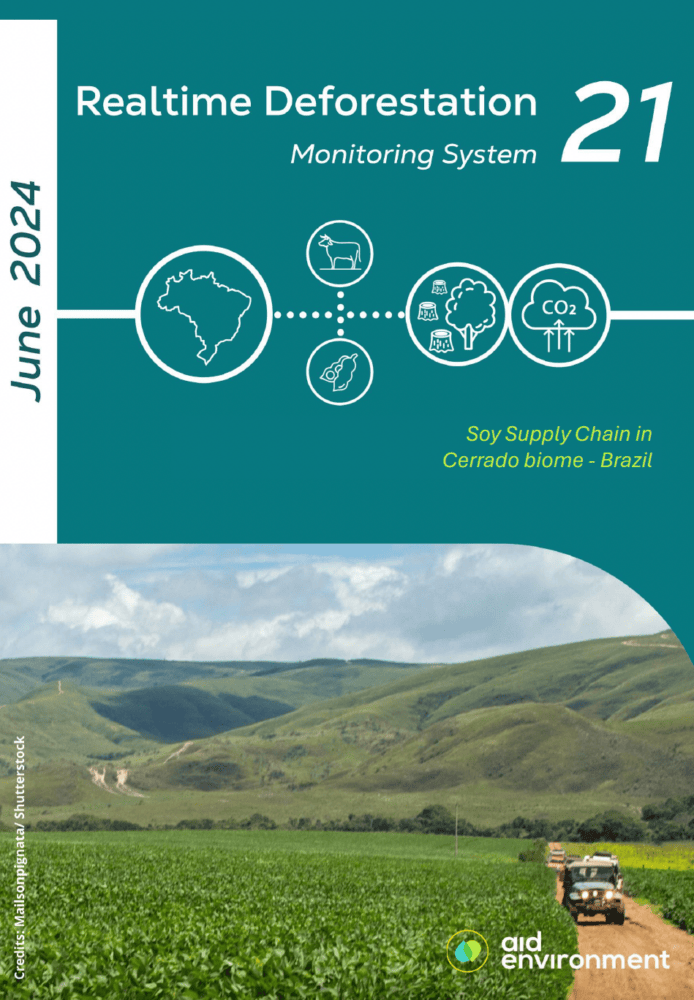Realtime Deforestation Monitoring Report (RDM 21) – June 2024


The RDM 21 report of June 2024 highlights 9 case studies linked to the soy supply chain in the Cerrado biome. The cases include the indication of non-compliance with the European Union Deforestation Regulation (EUDR) covering deforestation of native vegetation classified as Forest type, according to the forest definition of FAO, happening after December 2020. The 9 cases present 9,217 hectares of deforestation in Maranhão, Tocantins, Piauí and Bahia states (or Matopibaregion of the Cerrado biome), of which at least 3,359 hectares are non-compliant with the vegetation type criteria of the EUDR. The cases cover deforestation alerts detected during May 2024, with visually confirmed deforestation events happening between December 2023 and June 2024.
Together with the confirmed cleared area of native vegetation, the RDM also estimates the linked CO2 emissions (above-ground carbon emissions) according to vegetation type. The 9 cases of the RDM 21 report represent a gross emission of up to 0.7 million tons of CO2.
The EUDR prohibits commodities and products that have been produced in plots of land subjected to deforestation or forest degradation after 31 December 2020 from being placed in the EU market (deforestation-free requirement). It also requires relevant products to be produced in accordance with the relevant legislation of the countries of origin (legality requirement). All the cases included in RDM 21 showcase non-compliance issues related to these EUDR requirements, considering specifically deforestation of native vegetation classified as Forest type, according to the definition of FAO, and illegal clearance of any type of native vegetation taking place after December 2020.
Read the full report here
RDM reports are developed to support a wide range of actors – commodity producers and traders, financial sector stakeholders, and civil society – in taking evidence-based action towards real-time deforestation events. This and the upcoming RDM reports are published by AidEnvironment with support from the European Climate Foundation.
